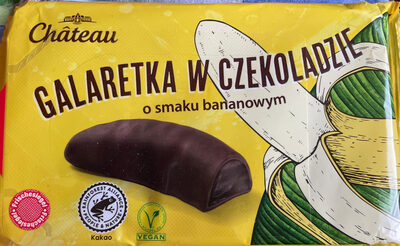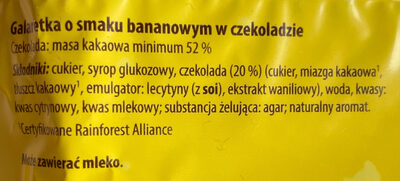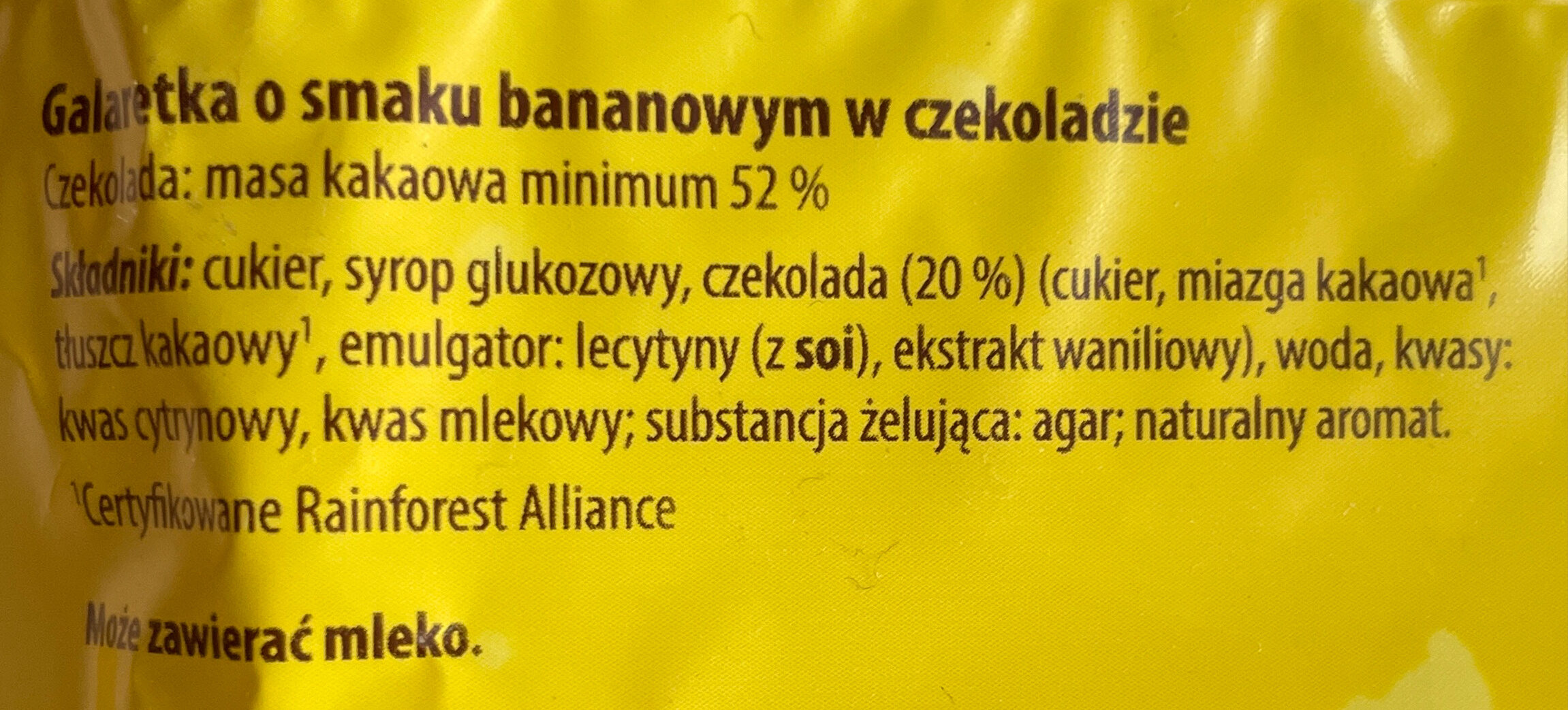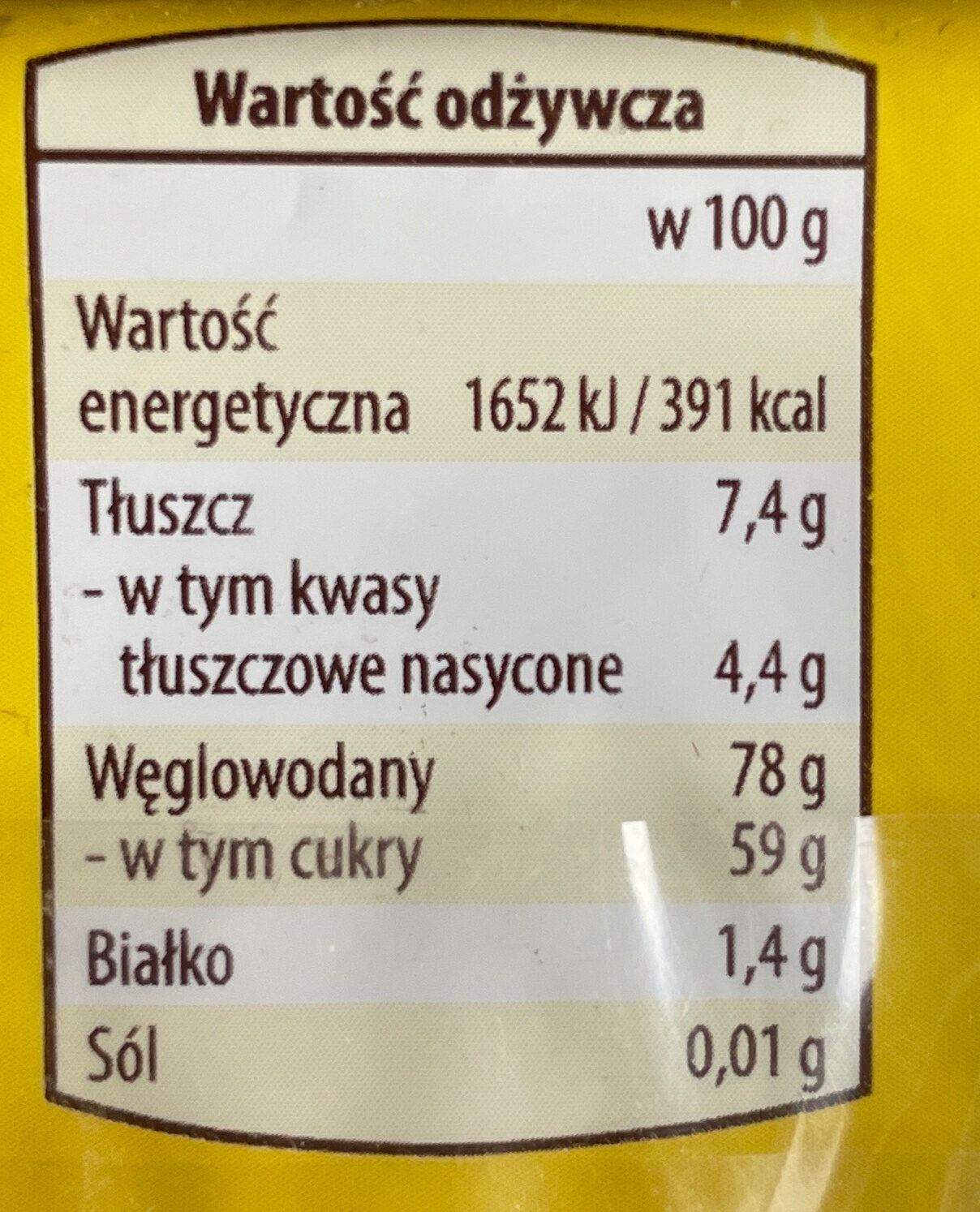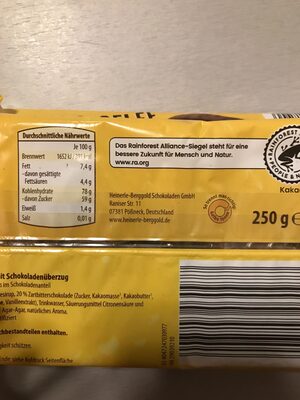Galaretka w czekoladzie o smaku bananowym - Chateau - 250 g
This product page is not complete. You can help to complete it by editing it and adding more data from the photos we have, or by taking more photos using the app for Android or iPhone/iPad. Thank you!
×
Barcode: 4047247030977 (EAN / EAN-13)
Common name: Gelee-Bananen mit Schokoladenüberzug
Quantity: 250 g
Packaging: Plastic, Kunststoff, Tüte
Brands: Chateau
Categories: Snacks, Sweet snacks, Cocoa and its products, Confectioneries, Chocolate candies, Bonbons, Fruit confectioneries
Labels, certifications, awards:
Vegetarian, Vegan, European Vegetarian Union, European Vegetarian Union Vegan, Rainforest Alliance


Matching with your preferences
Report a problem
Data sources
Product added on by halal-app-chakib
Last edit of product page on by arc2.
Product page also edited by emiljunker, packbot, risajanda.
If the data is incomplete or incorrect, you can complete or correct it by editing this page.
